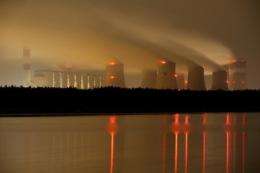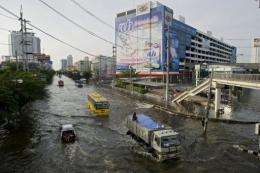World has five years to avoid severe warming: IEA

The world has just five years to avoid being trapped in a scenario of perilous climate change and extreme weather events, the International Energy Agency (IEA) warned on Wednesday.
On current trends, "rising fossil energy use will lead to irreversible and potentially catastrophic climate change," the IEA concluded in its annual World Energy Outlook report.
"The door to 2.0 C is closing," it said, referring to the 2.0 Celsius (3.6 Fahrenheit) cap on global warming widely accepted by scientists and governments as the ceiling for averting unmanageable climate damage.
Without further action, by 2017 the total CO2 emissions compatible with the 2.0 C goal will be "locked in" by power plants, factories and other carbon-emitting sources either built or planned, the IEA said.
Global infrastructure already accounts for more than 75 percent of that limit.
To meet energy needs while still averting climate catastrophe, governments must engineer a shift away from carbon-intensive fossil fuels, the agency said bluntly.

"As each year passes without clear signals to drive investment in clean energy, the 'lock-in' of high-carbon infrastructure is making it harder and more expensive to meet our energy security and climate goals," said IEA chief economist Fatih Birol.
The report outlines two scenarios for future energy consumption and emissions of greenhouse gases.
A "new policies" scenario incorporates existing government promises into a projection up to 2035.
A "450 scenario" lays out a timetable for curbing carbon emissions so that atmospheric concentration of CO2 stays under 450 parts per million (ppm), roughly equivalent to the 2.0 C target.
The current level is about 390 ppm.

Even taking into account current commitments, CO2 emitted over the next 25 years will amount to three-quarters of the total emitted since 1900, leading to a 3.5 C (6.3 F) average increase in temperature since that date.
Business-as-usual emissions would put the world "on an even more dangerous track toward an increase of 6.0 C (10.8 F)," the report says.
Scientists who have modelled the impacts on biodiversity, agriculture and human settlement say a 6 C world would be close to unlivable due to violent extremes of drought, flooding, heatwaves and storms.
The planet's average temperature has risen by about 1.0 C (1.8 F) over the last century, with forecasts for future warming ranging from an additional 1.0 C to 5.0 C (9.0 F) by 2100.
The report forecasts a one-third jump in primary energy demand by 2035, with 90 percent of this growth in developing economies.
Half of that demand will likely be met by increased use of coal, the most carbon-intensive of all major fossil fuels.
China -- already the world's top coal consumer -- is on track to use nearly 70 percent more energy than the United States by that date, it says.
Even under the "new policies" scenario progress toward a low-carbon economy will be halting.
The share of fossil fuels in global primary energy consumption falls from around 81 percent today to 75 percent in 2035, while renewables increase from 13 percent of the mix today to 18 percent.
This scenario already assumes a huge boost in subsidies for renewables, from $64 billion today to $250 billion in 2035.
"One wonders how many more worrying figures the world needs," commented Connie Hedegaard, the European Union's climate commissioner.
The report "shows that the world is heading for a fossil-fuel lock-in. This is another urgent call to move to a low-carbon economy," she said in a statement.
Setting a global price on carbon, slashing fossil fuel subsidies, boosting renewable energy and energy efficiency and revised tax codes are all tools for achieving that end, she added.
(c) 2011 AFP



















